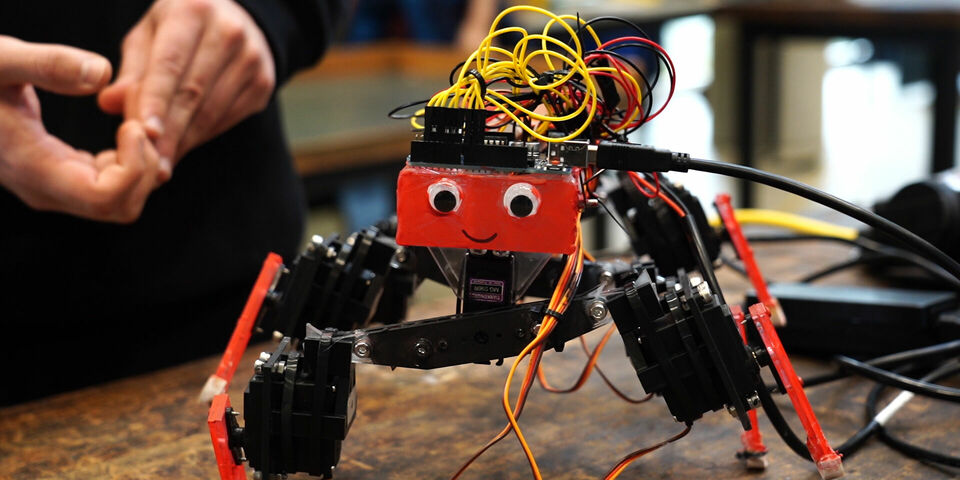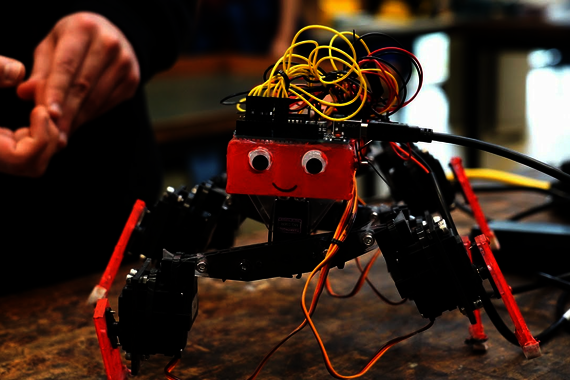Building a robot as a team
Whoever wants to see how Challenge Based Learning (CBL) works in practice can go to Traverse, the former administrative building. In the room where the University Council used to meet every month, first-year Mechanical Engineering students are learning in teams how to build a robot in just two and a half months. This week, Cursor went to film in the ‘Protozone’ and spoke with enthusiastic lecturers and students.
“The way that this course has developed in the past months has truly surpassed our wildest expectations," lecturers Ye Wang and Yoeri van den Burgt say. For the first time this CBL-course is offered to all the first-year students of Mechanical Engineering, and it is listed as ‘Multiped robot’ in the curriculum. Wang: “It means that the forty teams, each consisting of five to six students, have to build a robot and they can determine the number of legs themselves. They also need to develop a software program for the robot, but they are free to take on the challenge as they want. Eventually, the robot needs to be able to go through a parkour by itself. One part of the parkour will be slippery while the other part is covered with pebbles. Halfway through the parkour, the robot must be able to make a turn.”
3D-printing
In addition to coming up with the design, the students will also work with 3D printing and cutting with a laser to produce the components for their robot themselves. This is all done in the Protozone as well. Van der Burgt: “Within the team, cooperation must be immediate, and they must decide together who is best suited for which tasks. They learn how to work hands-on, and for everything to go well, they need to communicate well with each other.”
You can see that everywhere in the Protozone. Spread across desk islands and workbenches, teams are diligently optimizing software, connecting wires, adapting designs, or putting together a robot and practicing on a table with different surfaces.
Winner
Wang says that he would have loved to work on such a project during his student days in his home country China. “But, my education was mainly theoretical. By working on this project hands-on, first-year students are immediately introduced to the many different areas that come together in the program Mechanical Engineering.” Is there a price for the winner who manages to get their robot across the finish line the fastest? “There isn’t a trophy," says Van der Burgt, “but they do get a higher grade. However, all participants will get at least a pass grade; if not, they must have really mailed it in."



Discussion